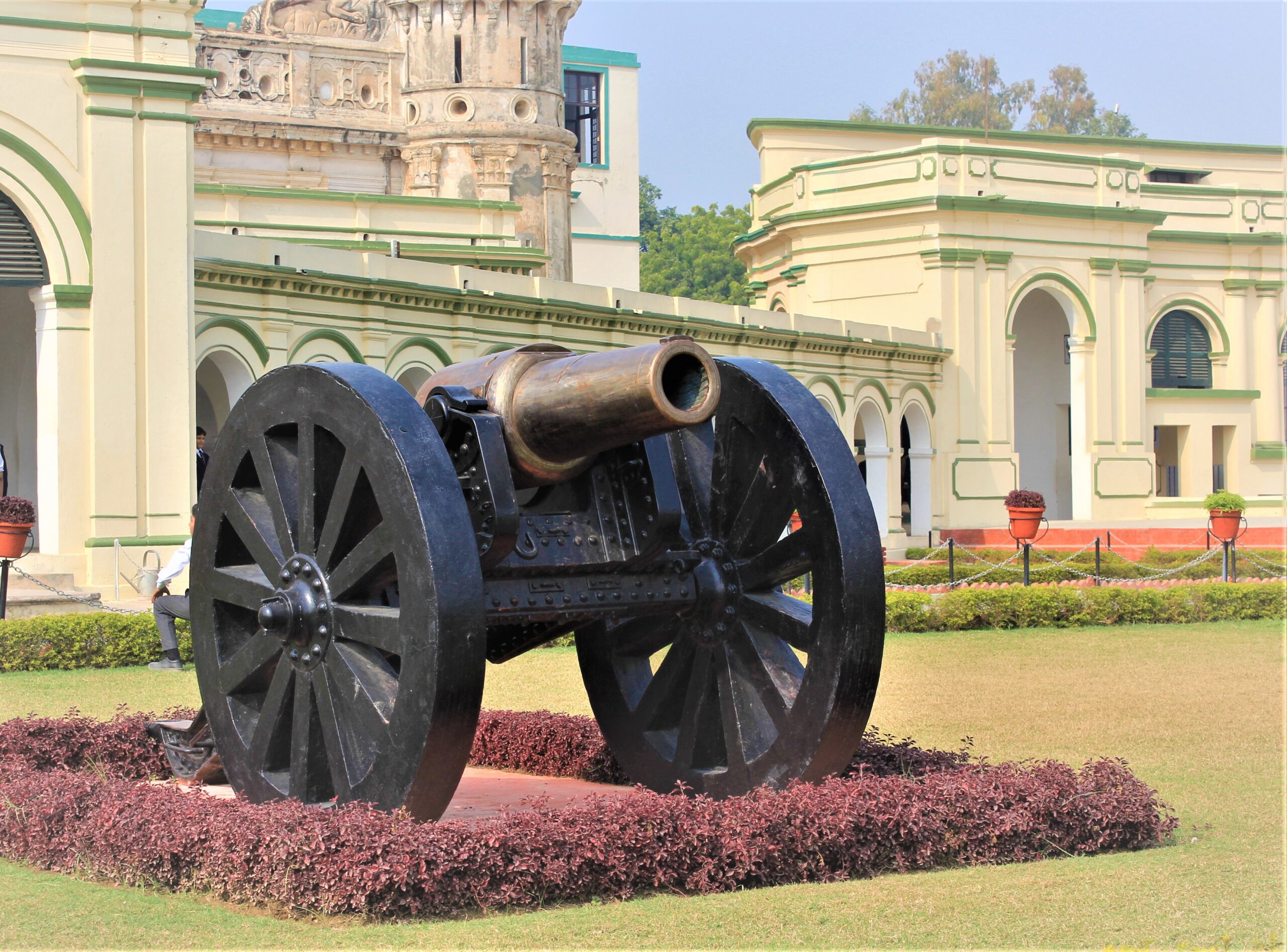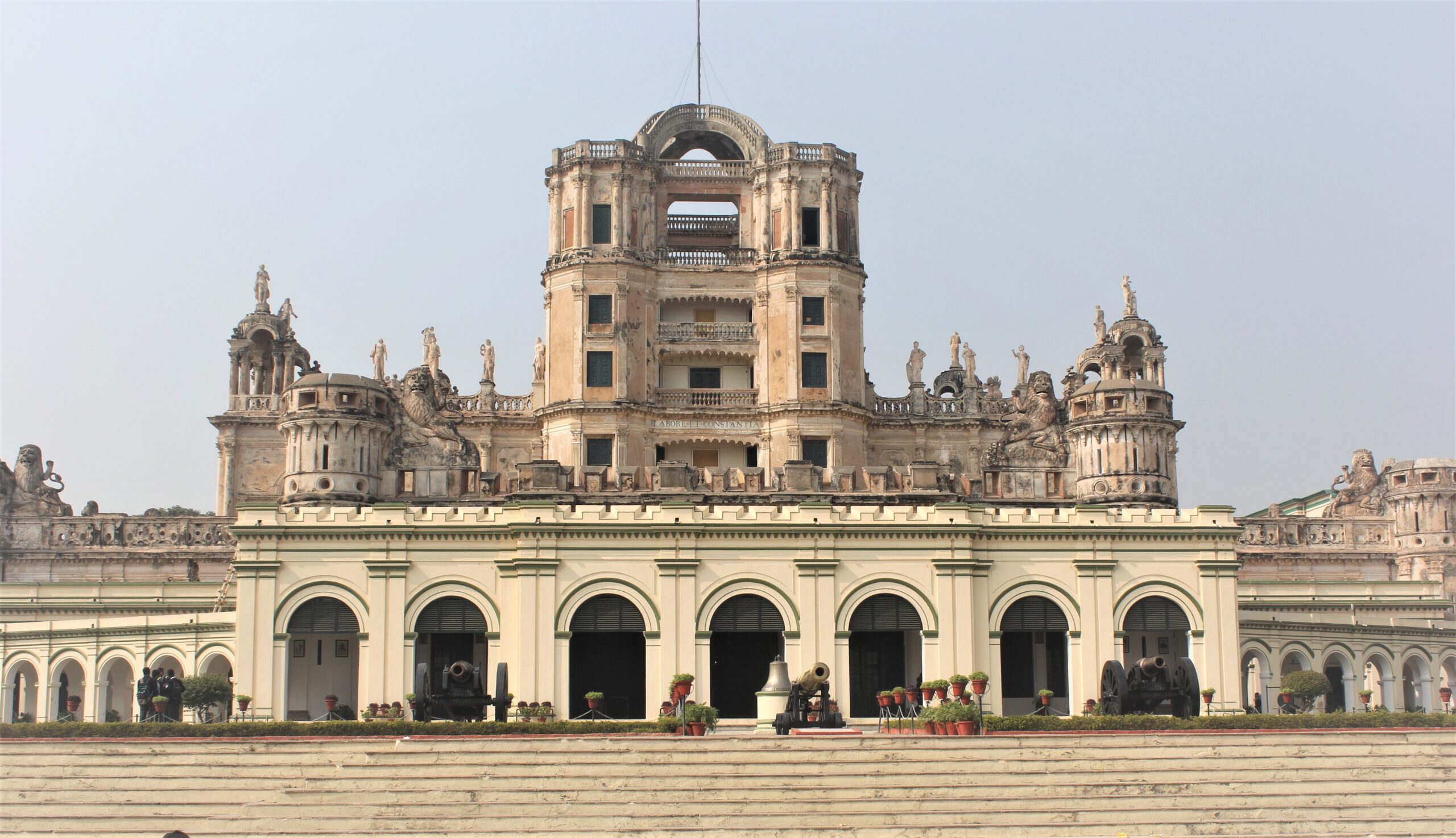PRAVASISAMWAD.COM
British historian William Dalrymple, in one of his many books on India, writes that the building is East India’s Company’s answer to the Taj Mahal
Even after all these years, La Martiniere Boys College, Lucknow, never ceases to be a favourite topic of discussion – a place steeped in history, mystery, romance, a bygone era without parallel. People go to great lengths to talk about it’s over 200-year-old history and its unique legacy that goes back to a particular Frenchman, Maj. Gen. Claude Martin built this imposing edifice in 1802. Martin never lived to see the completion of the building in 1802. He died on September 13, 1800.
Constantia, as the building is famously known around the world, Constantia is a magnificent mix of French colonial baroque, European and Italian styles of architecture. But often in the midst of the ensuing conversational crossfire, despite its landmark status and standing as a World Heritage site, an extraordinary achievement of the college is often unwittingly overlooked.

La Martiniere is the first among the only two educational institutions in the world to be awarded battle honours for the Stirling role played by its schoolboys, who fought shoulder to shoulder with British troops in defence of the Lucknow Residency during the uprising by Indian soldiers in 1857.
As many as 67 boys, an ex-student, eight staff members and the then principal, George Schilling, formed the La Martiniere contingent. The uprising began on June 30, 1857, and lasted for 86 days.
The uprising was quelled when Gen. Colin Campbell and his troops rushed from Agra and rescued the besieged defenders.
The school officially came into existence on October 1, 1845. The girls’ school was opened in 1869. The only other places where La Martiniere schools exist even today are in Calcutta and Lyons, France, the birthplace of Maj. Gen. Claude Martin. La Martiniere boys’ campus is spread across 400 acres. Part of the property is under the use and care of the Lucknow Golf Club, and part of it forms a portion of the Lucknow Zoo, previously known as the Prince of Wales Zoological Park.
Battle Honours awarded by Queen Victoria
After the siege, La Martiniere school was temporarily moved to Varanasi. In an 1858 proclamation, Queen Victoria recognised the courageous contribution by Martiniere students. The staff and boys who saw action during the siege were all awarded the Indian Mutiny Medal, inscribed with words “Defence of Lucknow”. It wasn’t until 1932 that the British government officially recognised the role of La Martiniere students. And the college was granted the right to carry on ceremonial occasions, a flag or colours with its own coat of arms, in very much the same fashion or style as any British regiment would.
There is something about the name ‘La Martiniere’ that gives rise to this involuntary compulsion to own it and feel that it is an inseparable part of your being. There could be many reasons why I feel this way. I can’t really put a finger on anything specific. But it is some sort of a sub-conscious umbilical connection that lingers on in the far corners of my mind. Yet it never fails at times to appear larger than life, like rain-washed memories that look so new and fresh, as though they’d taken place only yesterday – not half a century earlier.

On another level perhaps, it could possibly have something to do with that international connection associated with that French-sounding name ‘La Martiniere’ that immediately elevates Lucknow with all that is international, exotic, romantic, and with an undeniably and decidedly eclectic mystique and appeal, like Constantinople, or Venice or Florence.
But in my middling years as a teenager, growing up in the genteel ‘Nawabi ethos’ of Lucknow, now an almost distant and half-forgotten culture of yesteryears, La Martiniere was like jumping down a rabbit-hole and landing in some sort of Neverland, where it wasn’t at all too difficult to live out all my “Peter Pan fantasies”
I suppose ‘shikar’ was one of my biggest fantasies of that time. In those days, indulgent parents often gifted their sons with air guns. It was just the thing to give a 13-14 year-old an attitude, so that he could strut around and imagine he was something of a Jim Corbett and no less. Armed with our air guns, a friend and I would venture out on one of many ‘hunting expeditions’ in the sprawling, miles and miles of almost endless, and open ‘wild country’ on the grounds of the La Martiniere.
Hopes of seeing Tarzan, Phantom
In the make-believe world that we created for ourselves, this was Africa, although the woods weren’t that thick or dangerous. Nor were there any of the big cats, wild animals or tribal savages with more than a healthy appetite for a nice, juicy chunk of barbecued human flesh. But our make-believe world seemed real enough. And we actually half-expected at any moment to run into the Phantom, the Ghost Who Walks, somewhere up along the trail. Or that suddenly, Tarzan would come crashing out of the thick forest, swinging from the branches and announcing his presence with his strange, ringing cry of the great apes, who had raised him since infancy. But none of this ever happened, though it never stopped us from imagining that it might happen anytime, any day.
At day’s end, we’d come home tired and weary from our long, ‘jungle expedition’ or adventures, without any ‘shikar’, but with lots of stories to tell. If we ever got lucky on some rare occasion, we’d come back with some ‘game’, which would be a hapless pigeon. At other times it wouldn’t be anything at all, save for a sparrow or two, or a squirrel. But once we outgrew the ‘hunting’ stage, our attention was soon taken up with more down to earth activities the La Martiniere Boys’ School had to offer.
Every year during the summer break, the YMCA (Young Men’s Christian Association) would organise free-swimming coaching for boys and girls at the La Martiniere Boys College. I was always a regular at these swimming camps. But there were a lot of fun activities that would happen every once in a while at the Girls La Martiniere as well. To name just one were those gala poolside parties.
In the 70s there was a group of young men, all between the ages of 25-30, who really knew how to live life king-size, always looking for the slightest excuse to organize some kind of a bash – parties, socials, jam sessions. But their poolside parties were always the best thing. Because the Girls’ La Martiniere was the only centrally located place – just one kilometer off the most popular shopping centre, Hazratganj, which had an open-air swimming pool, the place was almost always more or less fixed as the venue.
But what were two Class 10 students, both 15 – my friend Kookie and myself – doing in the midst of all these young adults? Kookie’s Mum, Mrs Shakuntala Singh had converted part of her old bungalow into a bed-and breakfast establishment for bachelors. Some of these guys were Mrs Singh’s boarders, they were friendly guys, and we were always running errands for them – running to the corner shop to get them cigarettes or fetching their clothes from the laundry and a host of other odd jobs. We were invited to the party on condition that we’d stay in the background, making ourselves as inconspicuous as possible.
Later on the situation changed altogether. Somehow word got round that I can sing anything from Cliff Richards, Pat Boone, Frank Sinatra Elvis Presley, the Beatles, to The Seekers, and Englebert Humperdinck. Suddenly everyone, especially the ladies, wanted to have some live singing for a change, instead of the same old 45 and 78 rpm gramophone records. And so, in an instant, I became the star of the evening, hogging all the limelight. A bonus spinoff from that evening’s poolside party was that for all future parties/social anywhere in town, I was always invited to add a touch of novelty with my singing.
These and many more such occasions/events, have become an invaluable treasure-house of beautiful memories that light up my life even after all these years. And naturally, La Martiniere remains at the heart of all these memories.
(For over four decades, David Solomon’s insightful stories about people, places, animals –in fact almost anything and everything in India and abroad – as a journalist and traveller, continue to engross, thrill and delight people like sparkling wine.)



